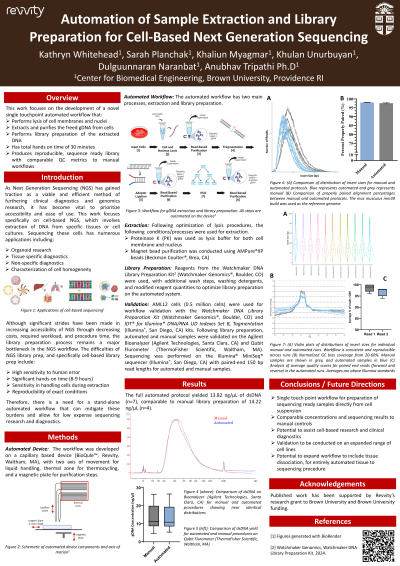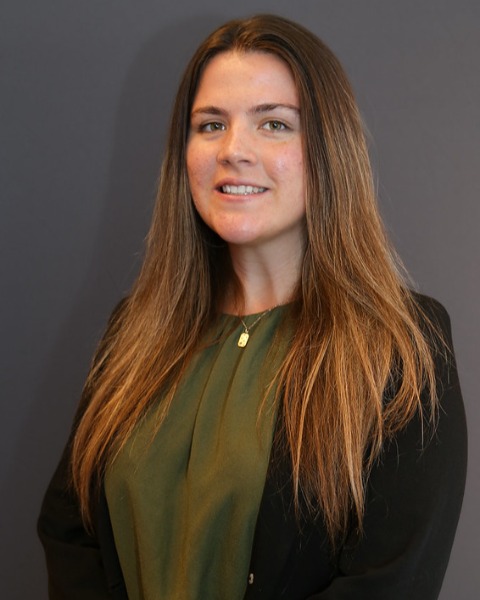Screening Applications & Diagnostics
Poster Session A
(1026-A) Automation of Sample Extraction and Library Preparation Workflow For Cell-Based Next Generation Sequencing
Tuesday, May 28, 2024
16:30 - 17:15 CEST
Location: Exhibit Hall


Kathryn Alice Whitehead
PhD Student
Brown University
Providence, RI, United States
Poster Presenter(s)
Abstract: Next-generation sequencing (NGS) technologies have revolutionized genetic research and clinical diagnostics. Particularly, cell-based DNA sequencing offers versatile applications across various domains such as cancer genomics, microbiome analysis, prenatal testing, stem cell research, rare disease diagnosis, immunology, and organoid research. However, the conventional processes of cell lysis, nucleic acid extraction, and library preparation are labor and time intensive. Therefore, here we present a fully automated workflow designed to generate sequencing-ready samples directly from cells using a single device with single point user intervention. This capillary-based device integrates a thermal system for lysis and PCR cycling and incorporates a movable magnet plate for magnetic bead-based extraction and washing, eliminating the need for a centrifuge. The entire workflow requires less than 30 minutes of hands-on time to prepare, enhancing accessibility and efficiency for research laboratories (the non-automated protocol can take ~8 hours of consistent direct user involvement). Using AML12 (alpha mouse liver 12) cells, the automated lysis procedure yielded an average of 15.31 ng/µL of double-stranded DNA (dsDNA), surpassing the yield obtained through standard non-automated protocols (8.206 ng/µL). Moreover, the full automated workflow (including lysis and library preparation) consistently produced high-quality sequenceable dsDNA (average of 13.82 ng/µL for automated compared to 14.22 ng/µL non-automated), with metrics comparable to the manual procedures. This automated workflow has the potential to eliminate human error and increase sample consistency, thereby expediting discoveries, enhancing diagnostics, and advancing precision medicine across diverse disciplines.
